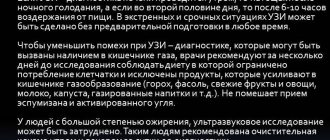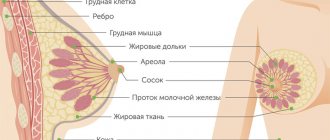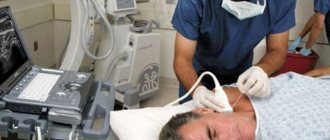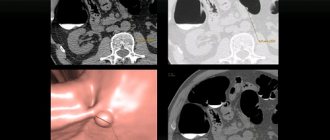04/26/2018 An ultrasound doctor is a specialist who studies the human body using ultrasonic waves. Ultrasound shows a two-dimensional image of internal organs in real time. Ultrasound diagnostics is one of the most accurate in modern medicine. It helps to correctly diagnose and prescribe appropriate treatment.
The responsibilities of the ultrasound doctor include carrying out the procedure and describing the picture he saw on the monitor of the device, which was obtained as a result of the examination using ultrasound. He also needs to keep reporting documentation and fill out survey forms. To perform his job, the ultrasound specialist must be erudite in topographic anatomy and know:
- about the size of each human organ in normal and pathological conditions;
- about the appearance of all formations - both natural and pathological.
When seeing patients, the ultrasound doctor is required to change gloves every time, record all visitors in a special log and fill out a form for them with the results of the procedure performed.
The ultrasound doctor does not independently make a final diagnosis regarding the presence or absence of a particular pathology. He deciphers the data on the monitor screen connected to the ultrasound machine, comparing them with the norm for the organ being examined. If there is a pathology in the results, the doctor makes a conclusion about what disease it may correspond to. The final diagnosis is made by the patient’s attending physician.
Doctor preparation before ultrasound
An ultrasound diagnostic specialist can work either alone or with a nurse. If the doctor practices independently, then he has to carry out all the preparation for the upcoming studies himself. First, connect the ultrasound machine and set it up to work. Secondly, control the availability of all consumables, including the gel for the procedure, which is applied to the skin at the test site and along which the sensor moves. A specialized gel (for example, Mediagel ultrasound gel) is necessary to improve the conductivity of sound waves. After monitoring the preliminary procedures, the doctor begins performing an ultrasound.
Study of the heart and blood vessels
Ultrasound of the heart and blood vessels is perhaps the most difficult section of ultrasound. The doctor who performs an ultrasound of the heart and makes a conclusion is a cardiologist .
Ultrasound of the heart helps to identify changes in the structure of the heart muscle, the volume of the heart chambers, the thickness of the septa, changes in the heart valves, the condition of the proximal sections of large vessels, and the presence of effusion in the heart sac.
For ultrasound of the heart and blood vessels, special devices with the Doppler effect are used, and the study is called Dopplerography. This method studies intracardiac hemodynamics (the nature of blood flows inside the heart), the state of blood flow in the vessels, including the heart itself.
What organs does the ultrasound specialist examine?
This specialist examines a wide variety of human organs, so he is indispensable and important in all branches of medicine. Today the most requested research is:
- abdominal organs;
- hearts;
- kidney;
- Bladder;
- pelvic organs;
- scrotum;
- uterus and ovaries;
- joints;
- veins and arteries of the lower extremities;
- brachiocephalic arteries;
- skulls;
- thyroid gland;
- salivary glands;
- lymph nodes;
- fetus;
- soft tissues.
Every ultrasound specialist should know what exactly all these structures and organs should be like under normal conditions and in pathology. All results recorded in a special form are handed over to the patient, after which they are transferred to the leading doctor.
History of the profession
The history of ultrasound is closely connected with two important discoveries:
- Ultrasound – L. Spallanzani (XVIII century).
- The piezoelectric effect is the basis of ultrasound equipment detectors, P. Curie (1880).
Based on this knowledge, in 1941 K. Dussik conducted the first ultrasound examination of the brain. This date is considered the birthday of medical ultrasound. After 8 years, the thickness of the intestinal walls was examined (D. Wild), and after another 9 years, the fetal head was measured. However, a truly modern ultrasound machine appeared in the United States in 1963. In the Russian Federation, ultrasound examinations have been included in medical practice since the late eighties of the last century.
The first ultrasound machines provided a 1D image, that is, not a snapshot of the organ itself, but a graph of its operation in A-mode. The sensor resembled a pencil with a piezoelectric element at the tip. The pathology of the organ was determined by the varying degrees of ultrasound reflection from the organ tissue. In the seventies, an additional device was invented - a hinge for rotating the sensor. Now the image became two-dimensional (2D) and made it possible to see the organ. Most modern ultrasound machines operate on this principle.
At the turn of the century, they learned to work not only in one plane, but also in one perpendicular to it. This is how 3D measurement and volumetric ultrasound appeared. And with the advent of two-dimensional phased sensors, a 4D image was born, providing complete visualization of the organ. Today, the resolution of images is less than a millimeter, and the shooting speed is almost instantaneous. But there is no limit to perfection. On the agenda is the creation of ultrasound tomography, that is, layer-by-layer examination of tissues with ultrasound. And, in addition, mastering the technique of directed ultrasound for the destruction of tumors. This is the future of ultrasound.
When performing an ultrasound, the experience of the specialist plays an important role.
Where can an ultrasound doctor work?
Today, the specialty of an ultrasound diagnostic doctor is in great demand due to the high role of the research obtained. Many clinics in all cities of Russia need such a specialist. An ultrasound diagnostic doctor can work in both private and public medical centers. Typically, work in establishments of the first type is paid higher. In addition to the outpatient clinic network, an ultrasound diagnostic doctor can also work in hospitals. Doctors with the most experience in ultrasound diagnostics conduct research in scientific and practical centers. The professional path to such institutions is long and usually takes place over many years of practice. Research centers recruit doctors of the first and highest qualification categories.
What is included in the competence of a specialist
The correct specialty of an ultrasound doctor is called a sonologist. Every doctor who has the ability to perform ultrasound of internal organs receives a job description when applying for a job. It determines his responsibilities and rights within the medical institution.
The job description of a sonologist includes the following responsibilities:
- Perform ultrasound using approved methods.
- Determine the best research tactics.
- Develop a patient examination plan.
- Comply with the rules of medical ethics.
- Follow safety precautions.
- Supervise the work of subordinate medical personnel.
- Increase your skill level.
Institutions for professional development
"Russian Association of Ultrasound Diagnostics in Medicine"
This organization unites practicing ultrasound specialists throughout Russia. The association was formed more than ten years ago with the goal of promoting the professional development of ultrasound physicians. In order to become a member of this organization, you need to submit an application, pay an entrance fee and then make a small annual payment. Joining the Association is very beneficial for any ultrasound doctor, since the company constantly holds thematic conferences, seminars and webinars that enhance professional development. Currently, the Association has several thousand members.
Medical cooperation
Ultrasound diagnostic specialists, like doctors in other fields, organize educational congresses to improve their qualifications and professional level. Most often, such events are held in the form of congresses, sometimes they are even held on an international scale. They are aimed at exchanging experiences between doctors, reading reports, discussing interesting and controversial cases in practice, stimulating and encouraging certain representatives of the profession. Doctors whose report was the most useful and interesting in the field of ultrasound development are awarded. Such events are very important for the training of medical personnel.
Who makes the final diagnosis?
The professional standard of the ultrasound physician does not allow him to make a diagnosis or issue a final conclusion. The ultrasound doctor’s task is to describe the course of the disease and conduct a high-quality diagnosis of organs. For example, if the attending physician gives a referral for an ultrasound scan of the adrenal glands, the diagnostician must analyze the size, structure, presence or absence of tumors or foreign substances. The professional standard does not allow making a diagnosis, offering treatment, or making prognoses. Violation of this rule may result in the doctor in the diagnostic room losing his license to work.

The maximum effectiveness of diagnostics using ultrasound examination has been noted for heart defects, disorders of the circulatory system, cystitis, appendicitis, cholelithiasis, cholecystitis, and pregnancy.
What are the most popular areas in diagnostics?
Today it is extremely difficult to draw conclusions about the most popular areas in diagnostics using ultrasound, since the technology is used everywhere. More and more doctors are trying to specialize in ultrasound in order to improve the quality of service delivery.
However, practice shows that operating surgeons and obstetrician-gynecologists are most interested in conducting research on their own. Due to the fact that the procedure is carried out independently, the specialist can more accurately determine and clarify the pathology.
One of the most “interesting” and promising areas in this medical field is the relationship between surgery and ultrasound diagnostics. There are procedures for taking a biopsy under the control of an ultrasound machine and marking the surgical field, but such complex manipulations can only be performed by a few.
Complete training
The Interregional Academy of Industrial and Construction Complex (MASPK) invites students to take professional retraining courses in the field of Ultrasound Diagnostics.
The Academy's resources make it possible to remotely train thousands of specialists from all regions of Russia. Our training programs are compiled with the participation of leading experts in their field and are regularly updated, which allows our graduates to successfully implement themselves in the profession. The Interregional Academy of Additional Professional Education (MADPO) conducts regular enrollment in additional professional education courses in the specialty “Ultrasound Diagnostics”. We offer advanced training programs in a distance format according to an individually agreed schedule, a modern educational and methodological base and standard documents upon completion of training. Training in the Ultrasound Diagnostics program at the Medical University of Innovation and Development (MUIR) is a modern educational program for medical specialists that allows you to complete training in the shortest possible time and without interrupting work. The University's courses are delivered both part-time and distance learning and fully comply with both educational and professional standards in the field of additional vocational education (additional vocational education). The National Academy of Modern Technologies (NAST) implements additional education programs and invites specialists to undergo professional retraining in the field of Ultrasound Diagnostics. The Academy's training programs involve the use of distance technologies, which allows our students to receive education without interruption from their main activities in the most comfortable mode. The career guidance center for medical personnel of higher and middle management MEDICALEDU invites you to undergo professional training in the specialty “Uzist Doctor”. Timely receipt of additional professional education allows you to timely pass certification events and continuously improve in your profession. The training format for professional retraining courses is distance learning. Author of the article
Yurkin Alexey











